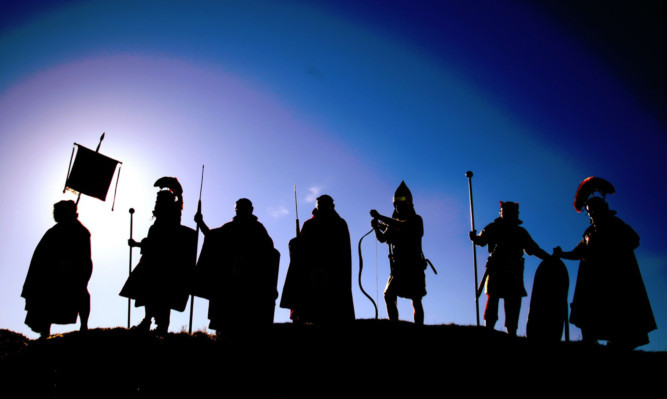Archaeologists are hunting for the remains of a lost fort that could shed further light on ancient Rome’s forays into Scotland.
Many people wrongly believe the Romans never ventured further north than the Antonine Wall or even Hadrian’s Wall, according to archaeologists.
However, evidence shows that they marched as far north as Elgin and a network of forts between Stirling and Stracathro, near Brechin, suggests they were based in Scotland for some time.
The forts form part of Rome’s oldest land frontier known as the Gask Ridge, but archaeologists believe one of the forts is “missing”.
The elusive fort is believed to be located somewhere in the Angus and Aberdeenshire countryside, and work will begin this week to try to find it.
Birgitta Hoffmann, co-director of the Roman Gask Project, based at the University of Liverpool, will lead a team of volunteers hunting for what would be the first major find north of the Antonine Wall in around 30 years.
Dr Hoffmann said: “We came last year to investigate Scotland’s most northerly Roman fort, but now we’re back looking for the lost fort.
“We’re not sure what exactly we’ll find, but we’re hoping to find something, and if it is a Roman fort, it will help to complete our understanding of the Romans in Scotland.
“We know they built forts as far north as Brechin, and we even have evidence that they marched as far as Elgin, but that’s it, but we think there’s much more than that.
“The problem is that they weren’t around long enough to build buildings out of stone – instead they used timber and turf which tends to disappear over time – so instead of just looking for lumps and bumps in the ground, we have to look at the local geography, old settlements, and a host of other evidence which will help us to pinpoint likely sites.
“People are always surprised when I tell them about the Roman occupation of the area. They think the Romans never got any further than the Antonine Wall or even Hadrian’s Wall which simply isn’t true. The truth is, we don’t know how far north they got, but we’re hoping that the work of the Roman Gask Project will change that this year.”
